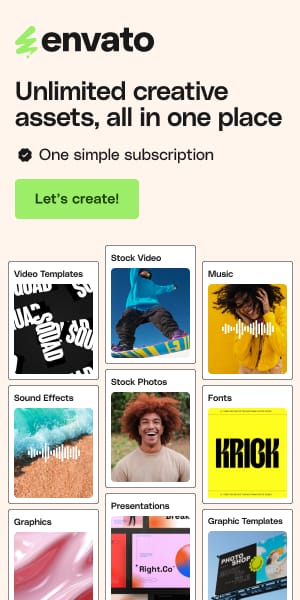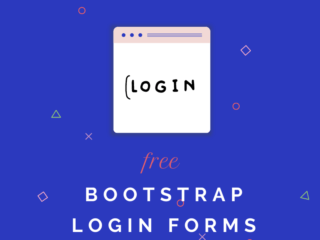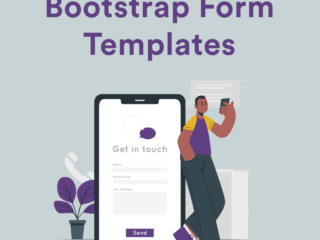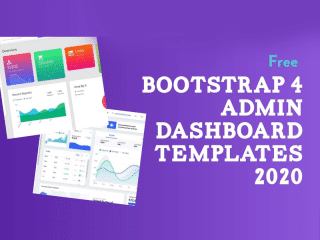Facilitating PSD to HTML Conversion using Bootstrap Works Exceedingly Well
The web development realm is filled with diversified technologies and frameworks. And more than a few of them prove to be decisive in giving the respective company – which is using them – a bonafide advantage.
CSS frameworks in particular play a massive role on the Internet platforms where there has always been an incessant pursue of frameworks that give the web development professionals a concrete foundation to work upon. And among all the useful and mundane CSS frameworks out there, Twitter Bootstrap is among the choicest ones.

For a truckload of web developers out there, Bootstrap is a pricelessly crucial tool the importance of which can’t be overstated. And its use in PSD to HTML conversion is being increasingly sought after with a keen desire.
See also : Everything You Need to Know About HTML5 Mobile UI Framework
Why Bootstrap is a Coveted Framework for Facilitating PSD to HTML Conversion
For all developers, converting the PSD files into HTML websites that are cross-platform compatible and highly responsive is always on the agenda. And for the same, you need an immaculately written CSS code, which is what Bootstrap helps you in accomplishing with flair. Bootstrap goes a long way in curating CSS code that lends that much needed responsiveness to any website.
Some of the best reasons to choose Twitter Bootstrap include:
- Creating responsive layouts is a job far too easier than achieving the same through other tools
- Cross browser compatibility is ensured unfailingly
- The overall code pattern is easier to understand and reproduce
- The upgrading exercise of framework doesn’t involve a complicated set up either
- The CSS code in Bootstrap is elaboratively documented
There are a bunch of elements in the Base CSS which can include buttons, typography, tables, forms, etc. Further, in the components section, you are made available several sub components like dropdown, modals, navigational tabs, thumbnails, alerts, progress bars, page headers, button groups, type head, and much more.
Based on LESS – style sheet language that is proven to be much more responsive and smoother than other style languages. Now, this language is written in JavaScript, which makes it all the more sought-after since the talented web developers of the world are adept in JavaScript and know their way around this platform exceedingly well. But, apart from being good at JavaScript, you also need to be fairly an expert at CSS and HTML.
Some of the Resources to Learn Bootstrap From
There are various online resources that give you a good understanding of Bootstrap components, apart from giving you insight into the HTML and CSS features you ought to learn for implementing Bootstrap.
- GitHub site of Bootstrap: The official GitHub site is arguably the best and most sought-after resource for anyone who not only wants to gain a root level understanding of the Bootstrap concepts, but also wishes to delve into more complex conceptualizations.
- W3resources:- Another elaborate and user friendly tutorial that gives you more than fair idea about what Bootstrap is all about. The most basic concepts are explain in elucidatory manner, and so are the concepts required to create high-end CSS. You can also know how Bootstrap interacts with the JavaScript plugins through this tutorial
- Webdesign.TutsPlus:- video tutorials most definitely prove to be most intuitive and easier to learn about a particular technology, and that’s what this tutorial delivers. The video tutorial covers all the Bootstrap components in a most comprehensive manner and prove to be exceedingly useful for even the novices.
The process begins with downloading the compiled Bootstrap version from here: http://twitter.github.com/bootstrap/index.htm.
Extract the zip file and then you need to initialize Bootstrap:
<head>
<meta name=”viewport” content=”width=device-width, initial-scale=1.0″>
<link href=”css/bootstrap.min.css” rel=”stylesheet” media=”screen”>
…
</head>
<body>
<script src=”http://code.jquery.com/jquery.js”></script>
<script src=”js/bootstrap.min.js”></script>
…
</body>Bootstrap also contains 12 column grid, and this grid structure further enhances the responsive attribute of the final website. You get to make use of the fluid grid feature that ensures that the images are scaled as per the requirements and you also get access to the stack elements.
As the demand for carefully constructed PSD to HTML conversions elevates, Bootstrap will also witness rise in its stocks, riding on its suite of exceptional capabilities as a CSS framework. For those who are yet to be introduced to this technology, step right in.







